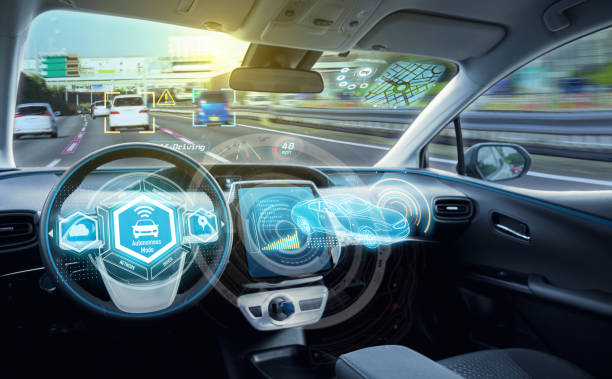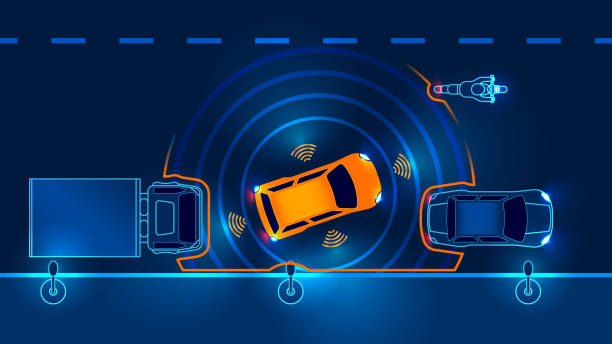Introduction
As the automotive industry propels toward a future of autonomous vehicles, the role of natural language processing (NLP) in facilitating seamless human-machine interactions becomes increasingly vital. The fusion of NLP with autonomous vehicles revolutionizes the way passengers communicate with their vehicles, allowing for intuitive voice commands and real-time conversational interactions. To protect the innovative applications and advancements in this burgeoning field, robust patenting strategies are essential. This article provides a comprehensive exploration of the intricacies of patenting autonomous vehicle NLP, offering insights into the significance of patent protection and the key strategies necessary for safeguarding intellectual property in this dynamic domain.

Understanding Autonomous Vehicle Natural Language Processing
Autonomous vehicle NLP serves as a bridge between humans and intelligent vehicle systems, enabling effective communication through voice commands, queries, and contextual understanding. Leveraging advanced algorithms and machine learning models, NLP systems empower autonomous vehicles to interpret and respond to natural language inputs, facilitating tasks such as navigation, information retrieval, and real-time assistance. The complexities involved in processing diverse linguistic nuances and conversational context underscore the significance of continuous advancements in autonomous vehicle NLP, making it a critical aspect of the future of transportation technology.
Importance of Patent Protection in Autonomous Vehicle NLP
The integration of Natural Language Processing (NLP) in autonomous vehicles represents a significant technological advancement with far-reaching implications for the automotive industry. In this context, the importance of patent protection cannot be overstated, as it serves as a cornerstone for safeguarding intellectual property and fostering innovation in the rapidly evolving landscape of autonomous vehicles. The significance of patent protection in the realm of autonomous vehicle NLP can be understood through several key aspects:
1. Encouraging Innovation and Research
Patent protection incentivizes inventors, researchers, and companies to invest in the development of groundbreaking NLP technologies for autonomous vehicles. By offering exclusive rights and incentives, patents encourage continuous research and development, fostering a culture of innovation that drives technological advancements and enhances the overall capabilities of autonomous vehicles.
2. Establishing Competitive Advantage
In a highly competitive automotive industry, securing comprehensive patent protection for NLP innovations allows companies to establish a competitive edge over rivals. Patented NLP technologies can provide unique selling points, distinguishing one company’s autonomous vehicles from those of competitors and potentially influencing consumer preferences and market dominance.
3. Attracting Investment and Collaboration
Patents serve as valuable assets that can enhance the attractiveness of autonomous vehicle NLP technologies to potential investors, collaborators, and industry stakeholders. A robust patent portfolio demonstrates the technological prowess and potential market value of NLP innovations, fostering confidence and trust among investors and paving the way for strategic partnerships and collaborations with other industry players.
4. Mitigating the Risk of Infringement
Patent protection acts as a defensive mechanism against potential infringements and unauthorized use of autonomous vehicle NLP technologies. By securing exclusive rights, patent holders can deter competitors from replicating or exploiting their innovations, thus safeguarding their market position and preserving the commercial value of their technological breakthroughs.
5. Enabling Licensing and Revenue Generation
Patents provide inventors and companies with the opportunity to monetize their autonomous vehicle NLP technologies through licensing agreements and royalty arrangements. Licensing patented NLP technologies to other industry players or stakeholders can generate significant revenue streams, facilitating the widespread adoption and integration of NLP innovations across various autonomous vehicle platforms.
6. Fostering Technological Progress and Standardization
Patents encourage the sharing of technical knowledge and best practices within the autonomous vehicle industry, contributing to the establishment of technological standards and frameworks for NLP integration. Through patent disclosures and licensing agreements, inventors can promote collaborative innovation and drive the standardization of NLP technologies, facilitating interoperability and compatibility among different autonomous vehicle systems.
7. Protecting Market Position and Brand Reputation
Patent protection bolsters the market position and brand reputation of companies that invest in autonomous vehicle NLP research and development. By safeguarding their intellectual property rights, companies can uphold their reputation as industry leaders and innovators, instilling consumer confidence and loyalty in their autonomous vehicle offerings and solidifying their presence in a competitive marketplace.
In summary, the importance of patent protection in the realm of autonomous vehicle NLP extends beyond mere legal protection; it serves as a catalyst for fostering innovation, driving market competitiveness, and shaping the future of autonomous vehicle technologies. By recognizing the significance of patent protection and implementing robust strategies to secure and leverage intellectual property rights, companies and inventors can position themselves at the forefront of the transformative evolution taking place in the realm of autonomous vehicles and natural language processing.

Strategies for Patenting Autonomous Vehicle Natural Language Processing
Conducting Comprehensive Prior Art Searches
A critical initial step in the patenting process involves conducting comprehensive prior art searches to identify existing patents, published literature, and other relevant information in the field of autonomous vehicle NLP. Thorough research is essential to assess the novelty and inventive step of the proposed NLP technology, ensuring that the patent application demonstrates distinctiveness and does not infringe upon existing intellectual property rights. Engaging the expertise of skilled patent search professionals can streamline this process and provide a comprehensive understanding of the existing technological landscape.
Drafting Robust Patent Claims
Clear and precise patent claims play a pivotal role in defining the scope of protection for autonomous vehicle NLP innovations. Drafting robust patent claims requires a meticulous understanding of the intricacies of NLP technology and its specific applications within autonomous vehicles. Emphasizing the unique features and functionalities of the NLP system, while simultaneously addressing potential variations and implementations, enables inventors to establish a comprehensive framework for protecting their intellectual property and securing a competitive advantage in the market.
Collaboration with Experienced Patent Attorneys
Collaborating with experienced patent attorneys specializing in NLP and autonomous vehicle technologies is instrumental in navigating the complexities of the patenting process. Seasoned professionals can provide valuable guidance on developing a strategic patent portfolio, from conducting prior art searches to drafting patent claims and responding to patent office actions. Leveraging their expertise and industry insights can significantly enhance the efficiency and efficacy of the patenting process, ensuring that the patent application complies with the latest legal requirements and standards.
Anticipating Future Technological Developments
In the rapidly evolving landscape of autonomous vehicle NLP, anticipating future technological developments is essential for formulating a comprehensive patenting strategy. Staying informed about emerging trends, advancements in artificial intelligence, and the evolving preferences of consumers can provide critical insights into the potential directions of NLP innovation within autonomous vehicles. By aligning the patenting strategy with anticipated technological developments, inventors can proactively protect their intellectual property and establish a strong position for further technological advancements and market growth.
Addressing Patent Eligibility Challenges
Given the evolving nature of patent eligibility standards, addressing potential challenges related to patent eligibility is crucial in the context of autonomous vehicle NLP. With increased scrutiny on software and algorithm-related patents, it is essential to ensure that the NLP technology meets the criteria for patentable subject matter in the relevant jurisdictions. Consulting with patent attorneys well-versed in the intricacies of software patent eligibility can help navigate the nuanced legal landscape and mitigate potential risks associated with patent eligibility challenges.
Emphasizing Technological Advancements in Patent Applications
In patent applications for autonomous vehicle NLP, emphasizing the technological advancements and innovative aspects of the NLP system is paramount. Providing detailed descriptions of the underlying algorithms, machine learning models, and computational methodologies can strengthen the patent application and demonstrate the technological advancements that distinguish the NLP system from existing solutions. Highlighting the practical applications and potential implications of the NLP technology within the autonomous vehicle industry can further reinforce the novelty and inventive step of the innovation, enhancing the prospects of securing comprehensive patent protection.
Implementing a Global Patenting Strategy
Given the international scope of the automotive industry, implementing a global patenting strategy is essential for securing comprehensive protection of autonomous vehicle NLP innovations. Understanding the nuances of international patent laws, filing procedures, and regulatory requirements in different jurisdictions is critical for expanding the reach of patent protection and leveraging global market opportunities. Collaborating with international patent attorneys and leveraging their expertise in navigating the complexities of global patenting can facilitate a streamlined and effective approach to securing international patent protection for autonomous vehicle NLP innovations.
Monitoring and Managing Intellectual Property Portfolio
Continuously monitoring and managing the intellectual property portfolio is essential for maintaining a competitive edge and maximizing the value of autonomous vehicle NLP innovations. Regularly assessing the competitive landscape, tracking industry trends, and evaluating the impact of emerging technologies can inform strategic decisions related to patent maintenance, enforcement, and potential licensing opportunities. By proactively managing the intellectual property portfolio, inventors can adapt to evolving market dynamics and position their autonomous vehicle NLP innovations for long-term success and market leadership.
Conclusion
In conclusion, patenting strategies for autonomous vehicle natural language processing play a pivotal role in fostering innovation, protecting intellectual property, and maintaining a competitive advantage within the dynamic automotive industry. By prioritizing comprehensive prior art searches, drafting robust patent claims, collaborating with experienced patent attorneys, and anticipating future technological developments, inventors can establish a strong foundation for protecting their NLP innovations and contributing to the continued advancement of autonomous vehicle technologies. Emphasizing the significance of patent protection and implementing a global patenting strategy are crucial for positioning autonomous vehicle NLP innovations at the forefront of the transformative evolution in the automotive industry.


